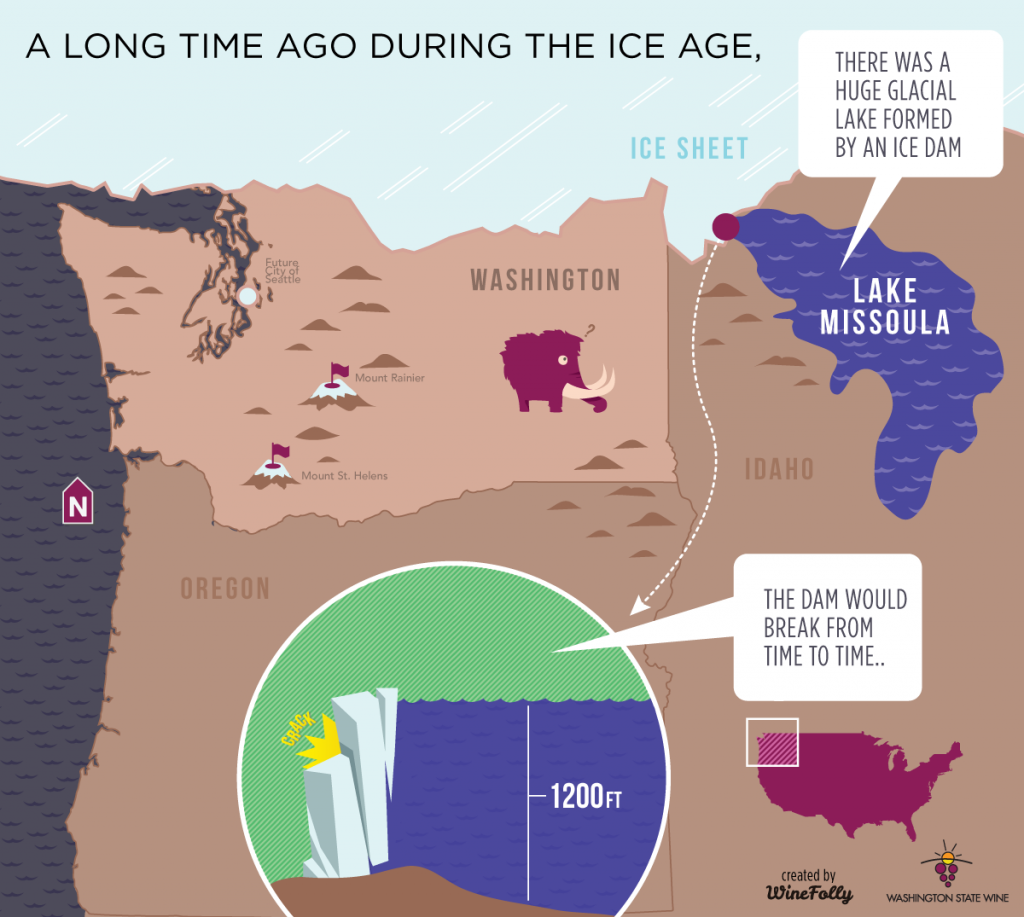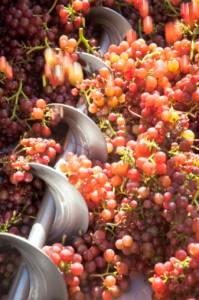by Hans D. Stroo on September 25, 2014
Agriculture is a major pillar of Washington’s economy, and its positive impacts are felt in every region of the state. Washington’s agriculture industry has an economic impact of $49 billion, employs over 160,000 residents, and generates 13 percent of the state’s total economic activity.
Below are eight facts about Washington State agriculture that you might not know.
1) Our agriculture export portfolio is fruit-heavy
In 2012, Washington State farms exported $3.4 billion dollars worth of agricultural commodities. Over 41 percent of those exported goods were fruit crops. Contrast this to the national level, where fruit crops make up a mere 5.5 percent of agricultural exports.
Export values expressed in millions of 2012 $US
2) An epic flood created Washington’s capacity for excellent wine grapes

20,000 years ago, towards the end of the Ice Age, an ice dam broke in modern day Missoula, Montana. The colossal 400 foot flood that followed carved out the Columbia Valley and created deposits of nutrient rich soil all over Eastern Washington. Deep deposits of this special flood soil allow grapevines to grow very deep root structures for collecting nutrients and water.

Via WineFolly: Washington is know for it’s “fruit-forward wines,” as the state’s soil is only about 20,000 years old. Whereas in someplace like South Africa, where the soil is over 50 million years old, they produce what are called “herbaceous wines.” This younger soil enables “superb fruit flavors and lush, silky textures.”
3) The despised Red Delicious apple is the most widely grown
In the 1980s, Red Delicious (RD) apples constituted three quarters of the total harvest. That number has since declined considerably, but RDs are still the single most grown variety. Many, this author included, find RDs to be mealy and unappetizing compared to some of Washington’s other apples. Originally, RDs were reportedly a tasty, sweet yellow variety that emerged from an Iowa orchard in the 1880s. Producers tinkered with the variety to alter its shape, firmness, juiciness, and ultimately its color too. They selected for traits that would enable the apple to be stored in a warehouse for up to 12 months.
A 2oo5 Washington Post article captured many of the reasons Why the Red Delicious No Longer Is:
Storage apples must be picked before all their starches turn to sugar. Pick too late, and the apple turns mealy in the supermarket, but pick too soon, and the apple will never taste sweet. Growers test for optimum conditions, but today’s popular strains of Red Delicious turn color two to three weeks before harvest, making it difficult for pickers to distinguish an apple that is ready from one that isn’t.
Nonetheless, the Washington Apple Commission claims that “the Red Delicious is the apple variety named as favorite by most consumers.” I suppose, as the expression goes, there’s no accounting for taste.
4) Washington State: Famous for… Raspberries?
No one will be surprised to learn that Washington is the nation’s largest producer of apples. However, it’s in the red raspberry market where our state holds the largest market share. Washington leads the nation in production of twelve agricultural commodities.
- Red raspberries, 90.5 percent of U.S. production
- Hops, 79.3 percent
- Spearamint Oil, 75 percent
- Wrinkled seed peas. 70.4 percent
- Apples, 71.7 percent
- Grapes, Concord, 55.1 percent
- Grapes, Niagra, 35.9 percent
- Sweet cherries, 62.3 percent
- Pears, 45.6 percent
- Green peas, processing, 32.4 percent
- Carrots (2011), 30.6 percent
- Sweet corn, processing (2011), 29 percent
 5) Food processing industry extends Ag’s economic impact
5) Food processing industry extends Ag’s economic impact
As of January 2014, there are 39,300 farms in Washington occupying 14.8 million acres of land. Most of the state’s farms are well outside the Puget Sound area, but agricultural products need to be packaged, processed, marketed, and transported to buyers – all of which produce jobs and profits well beyond the farms on which crops are grown. Food processing in Washington is a $15.46 billion industry. At $6.4 billion, King County food processing generates 42.2 percent of the industry’s gross sales.
Major food processing activities in the state include production of fruit and berry juices, french fried potatoes, wine, and pasteurized milk.
6) Wheat and hay occupy the most acreage, but apples generate the most sales
Data sourced from the 2013 Washington Annual Agricultural Bulletin. Acreage is expressed in thousands of acres. Production value of crops expressed in millions of 2012 $US.
7) YAKIMA VALLEY HOPS DOMINATE THE BEER INDUSTRY – NATIONALLY AND GLOBALLY
The Yakima Valley’s desert-like climate and abundant irrigation provide for a hops industry in our state which produces over 77 percent of the national supply. About two-thirds of the state’s hop harvest is shipped overseas. Ultimately, 25 percent of the world’s hops are grown in the Evergreen State.
8) MIND = BLOWN
About 11 billion apples are grown and handpicked in Washington every year. Via the Washington Apple Commission: “If you put all of the Washington State apples picked in a year side-by-side, they would circle the earth 29 times.”
Photo Credit: Washington Farm Bureau
